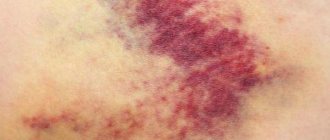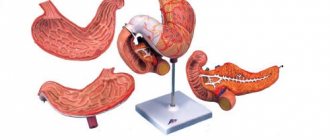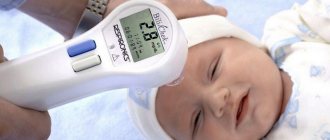Staphylococci are a broad group of anaerobic pathogens. Today, the number of species of this bacterium is at least 50 independent units. These are hemolytic, saprophytic and other varieties. The most common was and remains the so-called. Staphylococcus aureus (Staphylococcus aureus).
Unlike its “brothers”, this microorganism is characterized by extreme vitality and immunity to most antibacterial drugs.
This is a very formidable opponent. According to statistics, every third person on the planet is infected with it. Some sources name an even larger number of carriers. In almost 100% of cases, infection occurs in infancy. Why is this and how to cope with the infectious agent?
Causes and routes of infection
Infection with an infectious agent often occurs from the very first days of life. Staphylococcal infection is transmitted in several ways:
| Transmission path | Characteristic |
| Airborne | In this case, the infection enters the body of a small patient from an infected person through inhalation. Represents the smallest percentage of infection cases. |
| Food or nutritional route | Staphylococcus aureus can enter the body through the milk of an infected mother. If this does not happen in the early phases, there is a possibility of infection from stale or poorly prepared food during the period of introducing complementary foods. |
| Household way | Most often, a child is “awarded” with staphylococcus in the maternity ward. Lack of hygiene by health care workers, use of dirty pacifiers, etc., are just some of the possibilities. |
In most cases, nothing happens after the pathogen enters the body. Staphylococcus settles on mucous membranes (in the nose, in the eye), in the pharynx, and is found in the intestines along with conditionally pathogenic microflora (such as bacteria of the type Proteus Mirabilis). Despite the absence of productive symptoms, Staphylococcus aureus is found in the feces of infants. This condition can last indefinitely.
Thus, anticipating the question “is Staphylococcus aureus contagious or not,” we can answer in the affirmative. This is an extremely contagious (infectious when touched) microorganism. However, there is no reason to worry. Most people are already infected with it and don’t even suspect it.
Causes and ways of development of Staphylococcus aureus in the feces of infants
Knowledge of the causes of a particular disease can help prevent it or identify the source of infection. Infection often occurs in newborns for the following reasons:
- pathology of pregnancy;
- complicated premature birth;
- prolonged anhydrous period of time during childbirth;
- malnutrition and prematurity of the child;
- weak immunity;
- violation of the rules of hygiene of mother and child;
- dangerous bacteria in the mother;
- nosocomial infection when staying in the maternity hospital for a long time.
If the baby does not fall into any of the above risk groups, then most likely he contracted the infection in one of the following ways:
- through blood;
- through breast milk;
- with household items, rattles, pacifiers, etc. in case of violation of hygiene rules;
- through contaminated products;
- through medical equipment and instruments.
Symptoms of Staphylococcus aureus
This pathogenic microorganism produces rich symptoms. It depends on where the lesion is located. “Classic” options are the skin, throat, nose, and intestines. In some cases, staphylococcal conjunctivitis may develop.
Throat
With such localization of infection, primary tonsillitis develops. It can occur in both acute and chronic stages right from the moment of manifestation. In the first case, there is intense sore throat, a scratchy cough, and a change in tone of voice.
Since an infant child is not able to complain about his condition, the parents themselves should monitor him. If a newborn constantly cries, the baby’s behavior changes, the tone of voice changes or the voice disappears completely, there is a clogging cough without sputum, and there is a high probability of developing a sore throat.
In order to confirm this guess, you need to show the child to a pediatrician and pediatric otolaryngologist. The chronic form is less aggressive. There is no hyperthermia or typical symptoms. The latent course is observed most often.
Nose
When the nose is predominantly affected, a runny nose and the discharge of a large amount of viscous exudate, usually yellow in color, are observed. In this case, you also cannot do without consulting an ENT doctor.
Skin covering
When a staphylococcal infection penetrates the structures of the skin, symptoms appear that are similar in appearance to the course of chickenpox. The affected areas become covered with red spots, which after a few days transform into papules filled with liquid contents.
This rash tends to spread extensively throughout the body. Additionally, there is an increase in body temperature and symptoms of general intoxication of the body.
Intestines
In the intestines, Staphylococcus aureus appears, as they say, in all its glory, giving characteristic manifestations of severe dysbacteriosis. The color of the stool changes to dark green or brown. The consistency becomes liquid. There may be blood in the stool.
All this is complemented by severe abdominal cramps and increased body temperature. In severe cases, a skin rash may appear.
Photo: Staphylococcus aureus in the stool of a baby
Eyes
Redness of the conjunctiva of the eyes and discharge of a certain amount of purulent exudate are noted. If not treated in a timely manner, erosion of the cornea and blindness may occur.
Lungs
The development of secondary pneumonia is possible. In this case, there is a cough, difficulty breathing and other typical manifestations of pneumonia. It is extremely rare that pneumonia with staphylococcal lesions is primary. Much more often we have to talk about complications.
The list of manifestations is very wide. Can staphylococcus go away on its own? This is out of the question. We are talking about an extremely tenacious microorganism. Even complex treatment does not save a person from such a dangerous “neighbor”. The bacterium only calms down for a while, so that at an unexpected moment it can strike again. Is it worth talking about the chances of spontaneous recovery? The stages of Staphylococcus aureus may vary, but it never goes away.
Signs of Staphylococcus aureus in infants
Every parent should be aware of the symptoms of Staphylococcus aureus in young children. It should be clarified that for all cases of infection there are different symptoms. This depends on the state of the child’s immune system, the degree of aggressiveness of the pathogen and the place in which it has settled. Most often, Staphylococcus aureus affects the baby's oral cavity, respiratory tract and digestive tract.
Penetration of bacteria into the nose is accompanied by the following symptoms:
It is worth noting that the general condition of the newborn is within normal limits, no increase in temperature is observed.
With the penetration of staphylococcus into the oral cavity, manifestations of laryngitis, tonsillitis and laryngotracheitis are observed.
Accompanied by the following symptoms:
In frequent cases, the presence of staphylococcal pathogenic bacteria in a baby’s throat is accompanied by pain in the throat, which the baby cannot tell his parents about. Frequent crying of the baby, intensifying with swallowing and refusal to eat may prompt them to think about this.
Of all the routes of infection with staphylococcus, the food route is the most common. This can be indicated by the presence of staphylococcus in the feces of a baby, which, in fact, should not be there.
Penetration of staphylococcus into the gastrointestinal tract of an infant is accompanied by characteristic signs:
A dangerous and formidable manifestation of staphylococcal infection is sepsis, which is accompanied by the spread of infection through the bloodstream throughout the body. There have been cases where sepsis was fatal, so it is extremely important to recognize the disease in its initial stage and prevent the development of such complications.
Diagnostic measures
If you suspect that a child has developed an infection, it is recommended to immediately consult a pediatrician. It is necessary to tell about all suspicious manifestations. The doctor will prescribe the necessary tests and refer the patient to specialized specialists. As a rule, everything is limited to laboratory diagnostic methods.
Tests include:
- General blood test
. Gives a pronounced picture of inflammation with leukocytosis, ESR above normal, erythrocytosis. In the intestinal form, anemia with low hemoglobin levels may develop. - General examination of stool
. Shows the presence of microorganisms and provides other information. - Swab from the throat, nose
. Allows for microbiological testing to identify staphylococcus colonies. - Bacterial seeding of biomaterial
. Makes it possible to assess the sensitivity of pathogenic flora to antibacterial agents.
As a rule, these methods are quite sufficient. If there is any doubt, additional instrumental studies, such as ultrasound, are indicated to exclude damage to internal organs.
Treatment of Staphylococcus aureus in infants
The first question that arises is whether the staph infection needs to be treated. Definitely necessary. In the absence of proper therapy, there is a high risk of developing severe complications. The therapy is complex, medicinal. Includes:
| A drug | Characteristic |
| Antibiotics | The doctor will decide which ones based on bacterial cultures. Without this research, the prescription of antibacterial drugs is useless and dangerous. In this simple way, a person will only provide a service to staphylococcus by increasing its resistance. |
| Bacteriophages | Living microorganisms that feed on bacteria. Prescribed for local use. |
| Antiseptic drugs for local intestinal action | Such as Enterofuril, Ersefuril 200, Enterol. They kill staphylococcus on the mucous membranes of the colon, but also harm beneficial bacteria, so they should be taken in combination with prebiotics. |
| Other local antiseptics | For treating mucous membranes of the throat, nose, ointments and eye drops. The herbal preparation Chlorophyllipt, which is designed to fight staphylococci, is particularly effective in treating nasopharyngeal infections. |
| Immunomodulators |
The list of pharmaceutical groups is very wide. The specific names of the drugs are determined only by the doctor. Self-medication is strictly unacceptable. How long does it take to treat a staph infection? Variants are possible. Most often we talk about a duration from 5 to 21 days.
There is no question of any traditional treatment for the child.
The baby's body is not a testing ground. There are simply no proven effective alternative treatments for staphylococcus. It’s not worth risking your baby’s health.
Complications
In the absence of adequate therapy, there is a high probability of developing the following consequences:
- Sepsis (blood poisoning).
- Ulcerative colitis.
- Blindness.
- Infectious meningitis.
- Pneumonia.
- Shock.
Most often we are talking about deadly conditions that can quickly take the life of a baby.
Prevention
There are no specific preventive measures. It is enough for parents to observe the rules of personal hygiene.
Doctor Komarovsky's opinion
Dr. Komarovsky believes that therapy for staphylococcal infections should be based on strengthening the immune system. This is the first priority. Antibiotics are prescribed only in exceptional cases. The doctor does not consider the presence of Staphylococcus aureus in the feces of a baby to be a pathology requiring treatment. This is the norm.
Modern children sit at home a lot, do not harden themselves, eat refined food and, as a result, get sick a lot. Parents, instead of strengthening their child, stuff him with all sorts of medications that make the body even weaker.
Traditional methods of treatment
There are traditional medicine recipes to combat staphylococcus; they can be used to treat infants and older children. If the symptoms indicate Staphylococcus aureus in a baby, then additional treatment with folk remedies will not be superfluous.
- Recipe No. 1: for bathing newborn babies - take 0.5 kg of fresh or dried string, pour two liters of boiling water. Then the mixture is boiled over low heat for 20 minutes. The finished broth is covered with a lid, wrapped and infused for half an hour. The decoction is added to a bath of warm water for an evening bath for the baby. The duration of therapeutic bathing is from 15 to 30 minutes. You can wipe the baby's inflamed skin with undiluted water several times during the day.
- Recipe No. 2: pour one teaspoon of dried calendula flowers into a glass of boiling water, stir and place in a water bath for 60-100 minutes to evaporate. The prepared decoction is used to gargle for older children and is used to wipe the eyes and wash the nose of infants.
- Recipe No. 3: one tablespoon of dried or fresh chamomile flowers is poured into a glass of water, put on fire and brought to a boil. After which the broth is boiled over low heat for 5 minutes. After removing from heat, close the container tightly with a lid and leave to infuse for 20 minutes. The decoction is used as herbal tea, as a gargle, for washing the nasopharynx and eyes. Chamomile is suitable for treatment for both newborns and older children.
- Recipe No. 4: two teaspoons of dried St. John's wort flowers are mixed with a glass of boiling water, covered with a lid and left to infuse for 30 minutes. The finished infusion is filtered and used as herbal tea and as a gargle for children after 3 years of age.
Important! Adults need to clearly understand that traditional medicine is just an auxiliary factor in treating a child. Treatment should be prescribed by an experienced doctor, this will help the child recover faster.
How does staphylococcus manifest in infants?
Staphylococcus is a spherical bacterium that most often lives in hospitals. The disease develops with weak immunity, and strong people are rarely found in hospitals. Patients are always sick and their immunity is weak.
Staphylococcus is resistant to penicillin antibiotics because it has a protective enzyme, penicillinase. Re-infection is possible, since this disease does not create immunity to infection.
Most often, children who were born during a pathological pregnancy, as well as those who went through a difficult birth, become infected with staphylococcus. A long anhydrous period during childbirth, gestosis, prematurity, malnutrition, improper child care - all these are risk factors for the development of staphylococcus in children.
Staphylococcus can be found in every person, as it is an opportunistic microorganism that lives on the mucous membranes and skin. Babies put everything in their mouths, and everything around them has a lot of germs. Sterility should not be elevated to a cult, but it is important to strive for order. Most children have rather weak immunity. A child is born with a certain underdevelopment of organs and systems, the immune system is no exception. Staphylococcus is most often found in children of the first year of life. In the womb, the baby is in sterile conditions, but when it sees the light, it encounters a whole world of microbes.
How does staphylococcus manifest in infants? Acne, carbuncles, and boils appear on the skin, suppurative processes occur in the wounds, sepsis, pneumonia and meningitis can begin. Sometimes staphylococcus is similar to a cold or intestinal disorder.
Signs of staphylococcus in infants
If there is a suspicion that the baby has staphylococcus, it is necessary for mother and baby to undergo certain tests. The mother donates milk, and either a nasal swab or feces is taken from the baby, depending on how the staphylococcus manifests itself. If the pathogen is detected in milk, the mother will have to be treated together with the child. During treatment, it is important to strictly observe hygiene and take medications prescribed by the doctor. Taking antibiotics is useless and even dangerous, because they can provoke the occurrence of dysbacteriosis and worsen the situation. Staphylococcus is treated in a hospital using bacteriophages.
Signs of staphylococcus in an infant: rashes of various kinds, cold symptoms, conjunctivitis, tearfulness, abdominal pain, vomiting, high fever. Symptoms of staphylococcus are always visible, but they can easily be confused with other diseases, for example, ARVI, intestinal infection, and so on.
Staphylococcus in infants symptoms
Staphylococcus is resistant to external factors such as cold, heat and caustic substances. It cannot be removed with antibiotics, as well as other antiseptic and antibacterial drugs.
Symptoms of staphylococcus in an infant may not appear immediately, but if the disease begins, it will be difficult not to notice it. Rashes will appear on the skin and mucous membranes, which may fester.
Staphylococcus in infants treatment
This disease is considered quite serious, so self-medication is unacceptable. At the first signs of infection, you need to run to a doctor who will prescribe comprehensive treatment. Staphylococcus in infants is treated with antibacterial drugs, enzymes, probiotics, immunogenesis stimulants and vitamins. The baby and mother may need to be hospitalized.
Staphylococcus in a baby's intestines
Staphylococcus lives not only on the skin, in breast milk, feces, but also on the mucous membranes. If the child feels well, then there is no disease, and the amount of staphylococcus in his body does not exceed the norm. When a child’s immunity decreases, staphylococcus is activated and purulent processes begin.
If staphylococcus is found in the intestines of a baby, this means that the stool will be green and mucus. The disease is accompanied by abdominal pain, high fever, diarrhea and vomiting.
Staphylococcus in the stool of a baby
Staphylococcus is a dangerous bacterium that causes various infectious diseases. A person can be a carrier of staphylococcus, but not be sick. The disease manifests itself only when immunity decreases. In maternity hospitals, 90% of children immediately catch staphylococcus, but it does not manifest itself in everyone.
Staphylococcus in a baby's stool can cause diarrhea, abdominal pain and manifest itself as an intestinal infection. In order to determine the presence of staphylococcus in the stool, you need to take tests in the laboratory.
Staphylococcus aureus in infants
Staphylococcus can affect anyone, regardless of their age and gender. The worst thing is that after suffering from the disease, the immune system has no resistance to it.
Staphylococcus aureus in an infant can cause blood poisoning, which will require a blood transfusion. If the bacteria gets into the lungs, pneumonia can occur. Staphylococcus can settle in any human organ.
Klebsiella and staphylococcus in infants
If a child has frequent diarrhea, his stomach is swollen, and he constantly cries in pain, his body may be affected by Klebsiella.
Klebsiella is a rod-shaped microorganism that belongs to the Enterobacteriaceae family. This bacterium is classified as opportunistic; it lives in absolutely healthy organisms and does not manifest itself in any way. However, under favorable conditions, it immediately begins to reproduce.
Klebsiella and staphylococcus in infants often manifest themselves as ordinary dysbacteriosis. The baby often spits up and is bothered by colic and bloating. You can often see blood and mucus in the stool.
Staphylococcus epidermidis in infants
Staphylococcus produces toxins and enzymes that disrupt the functioning of cells in the body. Staphylococcus epidermidis in infants is localized in the nose, mouth, eyes, and so on. It usually attacks children who have undergone surgery, as well as weak and premature babies. Symptoms of staphylococcus depend on many factors. Everything matters: the age and general health of the child, his environment, the type of staphylococcus, and so on. The diagnosis is made by a specialist, and parents should monitor the child’s health and inform the doctor if any changes appear. If a staphylococcal infection is not promptly recognized and destroyed, damage to internal organs and sepsis may occur. If a child becomes lethargic, his temperature rises above 38.8, there is no appetite, diarrhea and vomiting begin, you should immediately call an ambulance. In this situation, parents are not able to help their child, because it is not easy to understand what kind of infection has clung to the baby.
Treatment of staphylococcus is carried out in a hospital under the supervision of specialists. Parents can monitor compliance with doctor's orders and treat wounds and pustules with special means.
Today, in maternity hospitals, more and more often, newborns are given a disappointing diagnosis - a staphylococcal infection. Its prevalence among infants is growing year by year.
Staphylococci are bacteria that, while they are not active, live peacefully on the mucous membranes, on the skin, and in the human intestines. But, when activated, they provoke the development of serious diseases, which are most dangerous at a young age. Therefore, parents need to know as much information as possible about staphylococcus in newborns in order to be fully armed and know how to protect their child from this scourge.
Knowing what exactly can cause a newborn to become infected with staphylococcus, you can protect him from these harmful factors. Although this is often impossible: the baby’s immune system after childbirth is very weak, and it is at this moment that staphylococci begin to activate. The most common causes of infection are:
- premature birth;
- weakened immune system;
- incorrect, failure to comply with hygiene rules;
- pregnancy pathologies;
- difficult, difficult childbirth;
- malnutrition of the baby.
Infection of a newborn with a staphylococcal infection can occur in the womb, during the birth canal, in the hospital and at home (if hygiene is not observed). The disease can also be transmitted to him through mother’s milk, which, when entering the child’s intestines, causes dysbacteriosis. But most often it is transmitted through food or dirty objects.
Causes of staphylococcus in children
Historical data on staphylococcus
Historical data
. Purulent-inflammatory diseases of the skin, soft tissues and internal organs have been known since ancient times. In 1880, L. Paster first discovered pathogens in pus from a boil and called them “pyogenic vibrios.” In 1884, they were studied and described by F. Rosenbach under the name “staphylococci”. Much credit in the study of staphylococcal diseases belongs to domestic scientists: M. G. Danilevich, V. A. Tsinzerling, V. A. Khrushchova, O. I. Bazan, G. N. Vygodchikov, G. N. Chistovich, G. A. Timofeeva, A.K. Akatov, V.V. Smirnova, G.A. Samsygina.
The causative agent of staphylococcus
Etiology
. The causative agents of staphylococcal diseases are bacteria of the genus Staphylococcus, which includes 19 species.
Three types of staphylococcus are of greatest importance in human pathology: aureus (S. aureus), epidermal (S. epidermidis), saprophytic (S. saprophytics). The species of Staphylococcus aureus includes at least 6 biovars (A, B, C, D, E, F). The causative agent of human diseases is biovar A, other variants are pathogenic for various animals and birds.
Staphylococci have a spherical shape, their diameter is 0.5-1.5 microns, and are gram-positive. In smears from a pure culture, microorganisms are located in clusters resembling bunches of grapes; in smears from pus, short chains, single and paired cocci are found. Staphylococci do not have flagella and do not form spores. Some strains form a capsule or microcapsule, mainly of a polysaccharide nature. Staphylococci grow well on ordinary nutrient media with a pH of 7.2-7.4 at a temperature of +37° C; form enzymes that break down many carbohydrates and proteins.
In the pathogenesis of staphylococcal infection, plasmacoagulase, DNAase, hyaluronidase, lecithinase, fibrinolysin, and proteinase are of greatest importance.
Plasmocoagulase causes plasma coagulation; hyaluronidase promotes the spread of staphylococci in tissues; lecithinase destroys lecithin, which is part of cell membranes; fibrinolysin dissolves fibrin, which delimits the local inflammatory focus, promoting the generalization of the pathological process.
The pathogenicity of staphylococcus is primarily due to the ability to produce toxins: hemolysins - alpha (a), beta (p), gamma (y), delta (5), epsilon (e), leukocidin, exfoliative, entero-toxins (A, B, Cj , Сг, D, E, F), TOKCHH-1.
The main one in the group of hemolysins is a-hemolysin, produced by Staphylococcus aureus. It causes tissue damage, dermonecrotic, neurotoxic and cardiotoxic effects.
- α-hemolysin has a cytotoxic effect on human amnion cells and fibroblasts, monkey kidney cells, HeLa tissue cultures, platelets, and macrophages.
- p-hemolysin lyses red blood cells of humans, rabbits, sheep, dogs, birds, and also has a lytic effect on leukocytes.
- γ-hemolysin has a wide spectrum of cytotoxic activity; in low doses, like cholera enterotoxin, it causes an increase in the level of cAMP and an increase in the secretion of Na+ and C1+ ions into the intestinal lumen.
Leukocidin has a detrimental effect on phagocytic cells, mainly polymorphonuclear leukocytes and macrophages, and has pronounced antigenic activity.
Exfoliative toxins cause staphylococcal “burnt skin” syndrome in humans.
Staphylococcal enterotoxins are heat-stable, resistant to proteolytic enzymes, and cause food poisoning in children. Enterotoxins cause the development of changes in the intestine similar to pseudomembranous enterocolitis, cause toxic shock syndrome, and affect immunocompetent cells and their precursors.
Toxin-1 (TSST-1) is found only in certain strains of Staphylococcus aureus and is responsible for the development of toxic shock syndrome.
The surface structures of staphylococcal microbial cells represent a complex system of antigens with diverse biological activities. The following have antigenic properties: peptidoglycan, teichoic acids, protein A, flocculent factor, type-specific agglutinogens, polysaccharide capsule.
Peptidoglycan has an endotoxin-like effect (pyrogenicity, reproduction of the Schwartzmann phenomenon, complement activation, etc.).
Teichoic acids cause activation of complement through the classical pathway, a delayed-type hypersensitivity reaction.
Protein A is present in the cell wall of S. aureus and is capable of nonspecific binding to the Fc fragment of IgG, and has the properties of precipitinogen and agglutinogen.
The flocculent factor prevents effective phagocytosis.
The polysaccharide capsule is not a component of the staphylococcal cell wall, but is structurally associated with it and is considered a surface somatic antigen. The biological activity of capsular polysaccharides is expressed mainly in their antiphagocytic effect.
Staphylococci have a number of plasmids that exhibit signs of resistance to antibiotics and the ability to synthesize coagulase, hemolytic toxins, fibrinolysin, and pigments. Resistance plasmids are easily transmitted from Staphylococcus aureus to epidermal, from staphylococci to Escherichia coli, Bacillus subtilis and other bacteria.
During the infectious process, staphylococci can change their enzymatic, invasive and toxigenic properties.
Staphylococcus aureus produces a golden-yellow pigment, capsule; synthesizes coagulase, a-toxin; Protein A and teichoic acids are present on the surface of the cell wall.
Staphylococcus aureus is divided into three lytic (I, II, III) and three serological (A, B, F) groups, within which phagovars are distinguished.
Staphylococcus epidermidis synthesizes a yellow or white pigment; protein A is absent in the cell wall; sensitive to novobiocin; does not produce coagulase and a-toxin.
Saprophytic staphylococcus produces a lemon-yellow pigment, does not have protein A, and does not produce a-toxin or coagulase.
Staphylococci are stable in the external environment: they tolerate drying well, and when exposed to direct sunlight they die only after a few hours. At room temperature, they remain viable on solid equipment for tens of days, and on patient care items for 35-50 days. They last especially long on food products, in particular fruits (up to 3-6 months). When boiled, they die instantly, at a temperature of +80 ° C - after 20 minutes, under the influence of dry steam - after 2 hours. Less resistant to the action of chemical agents: 3% phenol solution and 0.1% mercuric solution kill them within 15-30 min, 1% aqueous solution of chloramine - 2-5 min.
Source of staphylococcus infection
Epidemiology
. The main source of infection is a person - a patient or a bacteria carrier; pets are of secondary importance. The greatest danger is posed by persons with staphylococcal lesions of the upper respiratory tract (sore throat, pharyngitis, conjunctivitis, rhinitis), gastrointestinal tract (gastroenterocolitis, enterocolitis). The main reservoir of staphylococcus are bacteria carriers, in which the pathogen is localized on the nasal mucosa.
Transmission mechanisms: droplet, contact, fecal-oral.
Routes of transmission: airborne droplets, airborne dust, household contact, food. Indoor air becomes infected when coughing, sneezing, or dry cleaning. The spread of the pathogen is facilitated by overcrowding of wards, poor lighting, insufficient ventilation, violation of the rules of disinfection, asepsis and antiseptics. Transmission of the pathogen is possible through consumption of contaminated food (milk and dairy products, creams, confectionery).
Infection of children with staphylococcus
Infection can occur antenatally and intranatally. In newborns and children in the first six months of life, the contact and household route of transmission predominates. Infection occurs through the hands of staff or the mother, through contact with contaminated care items, toys, as well as through consumption of infected formula and milk.
Staphylococcal infection is recorded in the form of sporadic cases and group diseases. Epidemic outbreaks have been described in maternity hospitals, departments for newborns and premature babies, orphanages, children's surgical and infectious diseases hospitals.
The highest incidence of staphylococcal infection is observed among newborns and children in the first six months of life. This is due to anatomical and physiological characteristics, the state of local immunity, specific and nonspecific protective factors. Children with a burdened premorbid background (early artificial feeding, exudative-catarrhal diathesis, rickets, malnutrition, dysbiosis, perinatal damage to the central nervous system) who receive antibacterial and corticosteroid therapy are especially often ill.
Recently, there has been an increase in the incidence of staphylococcal infection in all countries. According to WHO, up to 50% of sepsis cases are caused by staphylococcus.
Staphylococcal infection does not have a pronounced seasonality; cases of the disease are recorded throughout the year.
Pathogenesis
. The entrance gates (for exogenous infection) are damaged skin, mucous membranes of the oral cavity, respiratory tract and gastrointestinal tract, conjunctiva, and umbilical wound. At the site of pathogen penetration, a primary purulent-inflammatory focus appears. In the mechanism of limiting the focus, the reaction of regional lymph nodes is of great importance. In young children, due to a decrease in the content of granulocytes in the blood and the ability to digest microbes, phagocytosis of virulent strains of staphylococcus is incomplete; persistent and long-term bacteremia occurs. Enzymes secreted by staphylococci promote the proliferation of microbes in the inflammatory focus and spread into the tissue (lymphogenous and hematogenous routes).
Bacteremia is promoted by nutritional disorders, vitamin deficiency, and irrational use of antibiotics. As a result of the reproduction and death of staphylococci, a significant amount of toxin accumulates in the macroorganism, which leads to the development of general intoxication. Clinical manifestations of staphylococcal infection are varied and are caused by different types of staphylococcal toxins. With the predominance of hemolysins, damage to organs and tissues with hemorrhagic syndrome develops, with the production of toxin-1 - toxic shock syndrome, with exposure to enterotoxins - damage to the gastrointestinal tract.
In the pathogenesis of staphylococcal diseases, the age of patients and the state of specific and nonspecific resistance are of great importance.
Pathomorphology
. At the site of entry of the pathogen, an inflammatory focus appears, which is characterized by serous hemorrhagic exudate, a zone of necrosis, surrounded by leukocyte infiltration and accumulation of staphylococci. The formation of microabscesses with their subsequent merging into large lesions is possible.
Staphylococcal pneumonia is characterized by multiple foci of inflammation and destruction.
In case of staphylococcal lesions of the gastrointestinal tract, which occur as a foodborne toxic infection, a predominant lesion of the stomach and small intestine is observed. These organs are somewhat dilated; their lumen contains greenish-yellow fluid. The mucous membrane is full-blooded, swollen, gray pityriasis-like deposits are noted, and occasionally massive fibrinous-purulent filmy deposits are noted. Lymphatic follicles (Peyer's patches) are enlarged and swollen. In the colon, only plethora is most often determined.
In primary and secondary staphylococcal enteritis and enterocolitis, maximum changes are detected in the colon. Intestinal mucosa with pronounced focal hyperemia and hemorrhages. The folds are thickened, covered with mucus, and in some places with yellowish-gray, grayish-brown or dirty green filmy deposits, which are easily separated to form ulcers.
Pathological findings in sepsis are varied. Often, with very violent clinical manifestations, morphological changes are very scarce. Characterized by icteric discoloration of the skin and sclera, hemorrhages on the skin and in internal organs, especially in the kidneys, and vein thrombosis. The spleen is significantly enlarged in volume, flabby, with copious scrapings on the incision. In all parenchymal organs and cardiac muscle there are signs of degeneration and fatty infiltration.
Symptoms and signs
Staphylococcus manifests itself in newborns in different ways. Symptoms will depend on where staphylococcus lives, what kind of staphylococcus is activated (golden is the most dangerous) and what disease it provoked. Therefore, external manifestations of infection can easily be confused with signs of other diseases:
- staphylococcus, settled on the skin, causes various kinds of rashes, suppuration, carbuncles and boils;
- infection of the mucous membranes (nose and throat) manifests itself in the form of a runny nose, cough and frequent sneezing - all symptoms of a common cold;
- the affected mucous membranes often turn around when the eyes turn red, fester and watery;
- if staphylococcus is intestinal (it is found in feces), digestive disorders are observed: frequent, watery, mushy stools with mucus; at the same time, the child will be very capricious and whiny due to abdominal pain;
- if blood poisoning is allowed, which is quite rare, sepsis begins, which manifests itself in lack of appetite, refusal to breastfeed, change in skin color;
- common symptoms may include vomiting, lethargy, lack of appetite, insomnia, and high fever.
The symptoms of staphylococcus are all obvious, visible, noticeable, but they are very easy to confuse with ordinary dysbiosis, the common cold and ordinary skin rashes that occur in almost all newborns. Therefore, staphylococcus in children can only be detected as a result of laboratory tests.
Signs and symptoms of staphylococcus in children
In most cases (from 48% to 78%), it is staphylococcus bacteria that cause inflammatory diseases of the respiratory tract, often found in children.
Staphylococcal pneumonia can occur after a child becomes infected in a hospital or maternity ward. The disease often develops at lightning speed, with destruction of lung tissue and other complications. Toxins produced by staphylococcus cause severe intoxication of the body, which, in combination with pneumonia, causes disruption of the respiratory system and blood circulation. A sick child is restless, tosses about in bed, and may moan and scream. Characteristic symptoms also include chills, sweating, dry cough and puffy face.
Staphylococcal enterocolitis is an extremely severe intestinal disease. In 13% of cases it ends in death. Premature and weak children are susceptible to the disease. It is also provoked by previously suffered acute respiratory diseases, taking antibiotics, artificial feeding and disturbances of the intestinal biocenosis.
The nature of the manifestations depends, first of all, on the type of microorganism:
- Saprophytic staphylococcus. Saprophytic staphylococcus is characterized by damage to the genitourinary system.
- Symptoms include:
Pain in the lower abdomen (in women);
- Possible development of colpitis (in women);
- Burning and stinging when urinating;
- Pain in the kidney area.
- General signs of intoxication (rare).
- Staphylococcus epidermidis makes itself felt by one main feature: pain in the area of the organs, and in the later stages - functional disturbances in their functioning.
- Staphylococcus aureus is characterized by the development of purulent-necrotic foci at the site of the lesion. Often it is this that causes the formation of boils, catarrhal tonsillitis, etc.
General and local symptoms of staphylococcus in children
By systematizing the symptoms, we can generalize all manifestations into two large groups: general and local.
Local manifestations:
- Rashes on the skin and mucous membranes. Boils (“ulcers”), carbuncles, etc. In children, they are especially often localized on the mucous membrane of the nose and throat. The development of spots and large boils indicates a severe course of the process.
- Purulent discharge in biological fluids. Mucus from the nose, sputum mixed with pus indicate damage to the mucous membranes of the upper or lower respiratory tract.
General manifestations:
- Symptoms of intoxication. Headache, fever up to 37.6-38.1 degrees Celsius, hyperemia or, conversely, pale skin, nausea and vomiting (this is especially common in children).
- Gastrointestinal disorders. Diarrhea, bloating, excessive production of intestinal gases, etc.
- In allergic children, immune reactions to toxins and enzymes that staphylococcus secretes during its life are also possible.
Risk factors
The intensity and nature of manifestations depend on many factors:
- Age. Symptoms depend on the age of the child. Infants suffer from staphylococcal infections more often, and the symptoms are much more severe.
- Habitat and penetration environment of the microorganism. The method of entry into the body determines the target. If staphylococcus enters the body with dust particles, damage to the upper or lower respiratory tract will appear. If with food, the throat or intestines will suffer.
- The health status of the carrier child. There is a direct relationship between the severity of the disease, the severity of its manifestations and the weakening of the immune system. It is indicated in a quite obvious way: the more weakened the immune system, the brighter the manifestations and the more severe the course of the staphylococcal infection.
- A type of microorganism. Staphylococcus aureus is the most severe infection.
- A type of microorganism (the most aggressive and dangerous is Staphylococcus aureus, which in 90% of cases causes infectious diseases in children).
Tests for staphylococcus
If infection is suspected, the baby and mother are sent for tests. Breast milk is taken from a woman as a material for bacterial culture, while the material from a child depends on the form of the disease and the place where the staphylococcus was activated:
- if there are signs of a cold, a nasal test is taken;
- for symptoms of dysbacteriosis - in feces;
- in case of manifestations of sepsis - in the blood.
The number of staphylococci in the bacterial culture of newborns is counted manually and compared with the norm. If it is exceeded and symptoms are present, treatment is prescribed. It also happens that there are no signs, the baby feels well, is cheerful and active, but the test result shows an excess of the norm - in this case, no treatment is carried out, but after a certain period of time the culture is taken again, and the child’s condition is constantly monitored by medical specialists . The situation can also play out in a third scenario, when staphylococcus is found not in the body of a newborn, but in the mother’s breast milk. In this case, it is necessary to carry out joint treatment of both.
How to treat staphylococcus in newborns
Treatment of staphylococcal infections, even in adults, sometimes causes difficulties, since microorganisms are resistant to most known antibiotics. In newborns, the situation is further complicated by the young age of the patient.
1. Drug treatment:
2. Folk remedies
Folk remedies for treating staphylococcus in newborns do not work, since they are not recommended to consume anything other than breast milk, especially herbal decoctions. Therefore, all treatment comes down to the use of external agents:
- complete sterilization of everything that surrounds the baby;
- using brilliant green to treat skin rashes;
- herbal baths with chamomile, oak bark and calamus.
With folk remedies for treating staphylococcus, parents need to be very careful so as not to cause even more harm to the child’s body instead of benefit. Everything must be agreed upon with the attending physician. The consequences of staphylococcal infection for newborns are those diseases that were caused by it - dysbacteriosis, enterocolitis, pneumonia, allergies, etc. In most cases they are treated successfully.
The discovery of staphylococci in newborns is always a terrible diagnosis, mortally frightening for parents. However, in the conditions of modern medicine, it is accurately diagnosed and successfully treated. Moreover, no matter how weak the baby is, the advantage is that he is under the supervision of experienced doctors. Usually, already during pregnancy, the risk of infection is known, so by the time the child is born, all measures are taken to protect it as much as possible from undesirable consequences.
Modern science includes more than 25 varieties of staphylococcus, but only three of their species pose a danger to humans. The most dangerous is the microbe that causes inflammation of the mucous membranes of the human body, leads to allergic reactions, and destroys the structure of cells. In addition, this microbe is very difficult to fight due to its resistance to antibiotics.
Each of us has learned to coexist with staphylococcus. It lives in our respiratory system, is always present on the skin, and is found in the intestinal microflora. However, in a healthy body, staphylococcus is inactive and is restrained by other microbes. As soon as the balance is disrupted, the harmful microbe begins to actively reproduce, which is fraught with various health problems.
Where does staphylococcus come from in babies?
The most serious diseases that this microbe provokes are:
- staphylococcal pneumonia;
- staphylococcal sepsis, i.e.
This microorganism also causes:
Where does staphylococcus come from in infants? The fact is that as soon as a baby is born, it is sterile, but from the very first minute of the child’s life, microbes begin to populate his body. They penetrate the nasopharynx, intestines, stomach, and settle on the skin. And this is normal, the baby adapts to the new environment.
A problem in maternity hospitals can rightfully be considered. In such places, disinfection occurs strictly on schedule and quite often. It kills absolutely all microorganisms: pathogenic and all others. And one of the first to occupy this vacated space is Staphylococcus aureus, which, as a rule, is carried by medical staff. There is no competition, and the microbe begins to actively multiply. Staphylococcus aureus settles in infants and develops without difficulty. And all because the newborn’s body still does not know how to fight hostile microbes.
Staphylococcus in infants: prevention
It doesn't take much to minimize the likelihood of illness from a newborn's exposure to these microbes.
- It is necessary to take precautions when disinfecting premises and not completely limit visits. This will preserve the normal microflora of the environment.
- To prevent diseases caused by staphylococcus in infants, the baby should be put to the breast as early as possible. It’s a huge plus that modern maternity hospitals allow the baby and mother to stay together. In this way, the child gets used to normal microflora through physical contact with the mother and thanks to breast milk, which contains antibodies to protect the baby.
- After a natural birth, you should be discharged home as quickly as possible. Then you are unlikely to find out that your baby has staphylococcus. It would be better if the baby leaves the hospital environment and begins to adapt to home as quickly as possible.
- Child hygiene and room cleaning are naturally necessary, but without fanaticism.
Conclusion
Staphylococcus is always present in our bodies. They do not treat it, but. It is, in principle, completely impossible to get rid of this microorganism.
You've probably heard about the terrible and insidious staphylococcus. Your friends only talk about this infection as the cause of all colds and intestinal diseases. In some ways they are right, staphylococcus may well cause various ailments, especially in a newborn, but before rushing into battle with the infection, you need to figure it out.
Staphylococcus is not a diagnosis; you should know that there are several dozen varieties of this infection, and only three of them are dangerous to health. So, this trio of enemies, along with epidermal and sapphorite, also includes Staphylococcus aureus. The diagnosis of Staphylococcus aureus in an infant should cause you concern.
Symptoms and classification of staphylococcus in newborns
Among the entire variety of staphylococcal species, only 3 are pathogenic due to their pathogenicity.
Saprophytic staphylococcus
It causes health problems in women because it lives in the genital area of women and the mucous membrane of the bladder. Causes various inflammations of the bladder, and sometimes the kidneys.
Staphylococcus epidermidis
Occupies any mucous membranes and any areas of the skin. Even the body of a healthy newborn baby copes with it without problems. However, if the body is weakened, for example, by surgery, especially with the use of artificial valves, joints, vessels, there are wounds on the skin, catheters and drainages are used, then the microbe from the surface of the skin penetrates into the body, causing various inflammatory processes, including endocarditis and sepsis.
Staphylococcus aureus
It penetrates everywhere in the body, can cause more than 100 different diseases, and is extremely resistant to antibiotics and antiseptics. Under a microscope, colonies of this type of staphylococcus are yellow or orange, which explains the name. Staphylococcus aureus is very tenacious.
Produces a special enzyme - coagulase. It works like this: when it enters the vascular bed from the surface of the skin, staphylococcus ends up inside a microthrombus, reliably protected from the action of the immune system. So staphylococcus can enter any organ and cause a purulent-inflammatory process in it.
- can withstand temperatures of 150° for 10 minutes;
- when dried, it lasts another 12 hours;
- feels great in ethyl alcohol;
- when exposed to hydrogen peroxide, it destroys it;
- continues to live in human sweat.
Almost all medical problems associated with staphylococcus involve the presence of Staphylococcus aureus, including in children. Symptoms are varied and depend on the location and intensity of the inflammatory focus . Staphylococcus, or rather the infection caused by it, causes the following general symptoms in children: fever, lethargy, diarrhea, vomiting, poor appetite.
Depending on the location of entry, staphylococcus provokes various diseases.
- When skin lesions occur, staphylococcus in newborns is accompanied by the following symptoms: folliculitis, boils, and carbuncles occur on the baby’s body. There may be pemphigus of newborns - a small rash appears on the swollen skin, which then turns into weeping pimples.
- In case of lesions of the mucous membranes, purulent conjunctivitis is diagnosed - redness and pus in the eyes, tonsillitis - a heavily coated tongue and tonsils, staphylococcal stomatitis - bright red mucous membrane of the mouth with ulcers.
- With damage to internal organs, disruption of the gastrointestinal tract is observed. Then enteritis and enterocolitis are diagnosed in children under one year of age, characterized by frequent and loose stools, fever, pale skin and rapid heartbeat.
The most dangerous staphylococcal sepsis is blood infection with staphylococcus through the umbilical wound, tonsils, skin, and gastrointestinal tract. Premature babies are at risk. Sepsis is manifested by high body temperature, intoxication of the body, various rashes, jaundice, and tachycardia. The course can be acute with pronounced symptoms, but more often it is sluggish; very rarely there is a fulminant course with a fatal outcome. At the first signs of sepsis, the child is urgently hospitalized.
Enteroviruses, acute respiratory viral infections, colds, dysbacteriosis, and diathesis have all the same symptoms. To make sure that it is a staphylococcal infection, you need to get tested and undergo diagnostics.
What is Staphylococcus aureus?
Cocci are nothing more than bacteria; every living organism has them; they can coexist peacefully for a long time without showing their pathogenic nature. But streptococci are a group of cocci. These microorganisms group together and form a unique microorganism.
But it’s too early for you to be afraid, since not all streptococci are dangerous to the body. Of the 27 species known today, only three of them cause harm to the human body, and only in certain situations.
Staphylococcus aureus in newborns occupies a leading position in the anti-rating.
What is Staphylococcus aureus? It is this organism that most often causes serious illnesses.
- Penetrates anywhere and affects any organs;
- Dangerous for people of any age, from infants to old people;
- Drug resistant;
- Staphylococcus aureus does not take the sun, nor boiling at 150 degrees, nor ethyl alcohol, nor saline solution; this bacterium even converts hydrogen peroxide into allies, releasing oxygen from it.
This microelement can be present in your body for a long time, and when the immune system is weakened, they will rush into battle.
This subspecies got its name from its color: under a microscope, a cluster of golden staphylococci has a pronounced yellow color. It stands out among its fellows with its strongest destructive ability, as well as incredible resistance to therapeutic and preventive measures. Staphylococcus aureus is especially dangerous for newborns - their unpleasant acquaintance occurs in the maternity hospital.
Diagnostics
It happens that it is very difficult to distinguish the symptoms of this bacterium from other diseases, or the disease is completely asymptomatic, then it is necessary to carry out a diagnosis through laboratory tests.
The first analysis for the presence of microorganisms is carried out in the maternity hospital at the birth of the baby. If Staphylococcus aureus is found in the baby's stool, the stool is checked for opportunistic and pathogenic microflora.
According to standards, it is generally accepted that the norm for bacteria in the body is 0 CFU/g of feces (the number of colony-forming units contained in 1 gram of feces taken for analysis). But researchers are still arguing about this. In some laboratories, 10 cfu/g is considered normal, and in others even up to 10 to the 3rd or 4th power cfu/g. Therefore, it is difficult to answer what it is: Staphylococcus aureus is normal in a baby. It is advisable to look at the level of development of this bacterium in the body; if the rate of its increase increases, then the infection is rapidly developing and a new or repeated course of treatment is necessary. If the growth of the bacteria is insignificant, then the child’s condition can be considered satisfactory, then you just need to be under the supervision of a specialist.
If staphylococcus is detected in the analysis of a baby, the mother's breast milk must be taken for analysis, since the infection may be in it.
Causes of the disease
Newborns in the first days of their life are especially susceptible to various types of bacteria. That is why the maternity room has maximum sterility and strict quarantine measures. And if, in most cases, this works, then no methods help with staphylococcus; it does not care about disinfection.
Know!
A premature or weak baby is a potential victim of the microorganism. The newborn's immune system is not yet able to resist bacteria, so infection can occur.
Staphylococcus can penetrate through breast milk, the umbilical cord, the baby’s nose, or can be located on delicate skin. The main route of infection is through the mother. You know that every person has staphylococcus, but strong and healthy bacteria do not develop any diseases; the unprotected body of a newborn is another matter. Older children can catch staphylococcus on dirty hands or unwashed fruit.
Which newborns are at risk?
- Children who have taken strong antibiotics;
- Premature babies who were in a pressure chamber for a long time and were bottle-fed;
- Infection through non-sterile tubes, masks, catheters;
- Flu or chickenpox in infancy. Read the current article How to protect your child from colds >>>;
- Weak immunity, diabetes mellitus;
- Contact infection from an infected mother, including through breast milk.
Please note that all newborns can be infected, but with a strong protective function of the immune system, the bacterium will not be able to cause the disease. Staphylococcus aureus is an opportunistic microorganism that will provoke disease only under favorable conditions.
Causes and methods of staphylococcus infection in children
Both adults and children can become infected with staphylococcus, and infants are especially susceptible to this.
Newborn premature babies are especially susceptible to the disease , which is associated with the underdevelopment of their immunity.
Also at risk are children on artificial nutrition , since deprived of breast milk, they are not able to develop natural immunity.
The reason for the appearance of staphylococcus in a child may be hidden simply because his parents are carriers of bacteria and if the child comes into contact with them, there is a high risk of infection.
Bacteria of normal microflora can enter the child’s body immediately after birth. Due to insufficient care, unfavorable conditions of the upbringing environment, decreased immunity due to refusal to breastfeed or other diseases, bacteria are activated and begin to multiply intensively. A child can also become infected with staphylococcus by inhaling contaminated air, drinking untreated water or unprocessed food.
The skin of a newborn baby also runs the risk of becoming infected: bacteria can enter the body through a poorly treated umbilical wound .
In very rare cases, infection occurs after any resuscitation measures or during operations.
Symptoms of the disease
Even if the analysis showed the presence of Staphylococcus aureus, this is not a reason to run to the hospital or pharmacy, or even worse, stop breastfeeding if the bacteria are found in the milk. Your guideline is symptoms. You should be concerned if the following symptoms are added to staphylococcus in newborns:
- Increased body temperature;
- Moody or lethargic state of the newborn;
- Poor appetite, read the article to find out why the child does not want to eat >>>
- Upset stomach, vomiting;
- Cough;
- Runny nose;
- Conjunctivitis, swelling of the mucous membrane, an important article about conjunctivitis in newborns >>>
- Skin rashes in the form of scattered red pimples;
- Flu with accompanying symptoms of upset stomach.
Sometimes the disease occurs unsystematically; analysis helps identify the pathogenic bacteria. The danger of the situation depends on the stage of infection.
Diagnosis of staphylococcal infections
Diagnostics are carried out only in laboratory conditions.
Types of diagnostics
Bacteriological culture. Allows the identification of pathogenic staphylococcal bacteria. Depending on the symptoms, the material for research may be blood, nasal mucus, sputum, saliva (throat culture). In case of food intoxication, feces, urine, vomit, and materials of suspicious etiology are taken.
Serological analysis. Allows you to identify specific antibodies to staphylococcal antigens. The research material is blood serum.
Biopsy. A suspected infected skin sample or fluid from the wounds is collected. Tested for the presence and type of bacteria.
Magnetic resonance imaging (MRI). This method is relevant:
— if it is impossible to diagnose the localization of bacteria;
- in the presence of acute symptoms of infection.
Osteoscintigraphy. Quite a rare but effective method. Helps identify the presence of infection in the bones.
Examination of sterile expressed mother's milk. An outdated and irrelevant method, which is still widely used in medicine. Read more about him in the “Myths” section.
Each laboratory has its own standards for the content of staphylococci in the analysis. Do not try to decipher the tests yourself!
Based on the completed tests, the doctor prescribes treatment. Depending on the disease, treatment can be completely different. The basis of treatment is the fight against the pathogen and elimination of the consequences of its activity in the body.
Where does Staphylococcus aureus live?
You already know that Staphylococcus aureus is not afraid of any obstacles, except the baby’s strong immunity. It can settle on the skin, in the nose or throat, on the genitals of a newborn or in the intestines. Let's see how and where he shows himself.
- On the skin. If you notice single scattered red rashes on your baby or boils, boils and other purulent formations, most likely the newborn has a staphylococcal infection. You will be surprised how easy it is to treat skin diseases caused by Staphylococcus aureus. This invincible microorganism is afraid of brilliant green;
If there are cracks, wounds or even a splinter, bacteria can enter the body. There they manage to travel through the vessels inside microthrombi and can land in any organ where they will cause a purulent process. For example, in a nursing mother, staphylococcus can cause purulent mastitis through the skin.
- In the nasopharynx. Every second person has had staphylococcus in his nose or throat at least once in his life. The purulent sore throat familiar to you from childhood is provoked in most cases by Staphylococcus aureus. The cause of pustules in the nose is the same;
- Before our eyes. You can’t do anything about conjunctivitis or your baby has persistent styes on the eyelid - check for infection with Staphylococcus aureus;
- In the intestines. It is no coincidence that the intestines are in last place on our list. This is the most difficult place for staphylococcus to get into, and besides, the immune system in this area is the strongest. But there are several factors that are on the same side of the barricades with staphylococcus - this is dysbacteriosis. It then creates a positive environment for the reproduction and action of the microorganism.
In the absence of treatment and the necessary preventive measures, staphylococcus, for example, can migrate to other organs: from the nasopharynx it can penetrate into the lungs and cause pneumonia. That is, you should not leave everything to chance, expecting a miracle from the baby’s immune system, but you also do not need to immediately buy antibiotics.
How is a staph infection treated?
- Staphylococcal infection quite often threatens babies in the first days after birth, when the body is especially weak. Identified staphylococcus in newborns requires treatment in a hospital, in a sterile chamber. At the same time, you should not give up breastfeeding, since milk contains all the necessary immune-strengthening components;
- If staphylococcus is detected in the intestines, hospitalization should also not be abandoned;
- But skin diseases and nasopharynx, with a quick response, can be treated at home.
Staphylococcus aureus is afraid of brilliant green and chlorophyllipt; it also does not like herbal decoctions of calendula, chamomile and St. John's wort (read the similar article Herbs for bathing a newborn >>>). But you should not prescribe pharmaceutical drugs to a newborn yourself. You can’t handle this beast with your bare hands; before taking the medicine, you need to do a bacterial culture. But strengthening the immune system with vitamins is not only possible, but also necessary.
Staphylococcus in infants: normal and pathological?
Symptoms in the form of pain in the abdomen, yellowish foamy stool, and when staphylococcus is detected in the feces of newborns, clearly indicate infection. No matter what degree the analysis shows, the norm is the absence of Staphylococcus aureus in the baby’s feces. It doesn’t belong there and shouldn’t be in the baby’s intestines.
As for other tests, such as a swab from the throat or nose, Staphylococcus aureus 10 in 4 degrees or 10 in 3 degrees in children older than one year, with general good health, does not require medical treatment - only immunocorrection. But in children under one year old, even such a minimal percentage cannot be ignored.
But Staphylococcus aureus 10 to 5 degrees in bacterial culture indicates a significant increase in pathogenic microorganisms, it’s time to see a doctor.
So, the main rule in the fight against Staphylococcus aureus is preventive measures in the form of hardening, breastfeeding and adequate treatment in case of infection. You shouldn’t rush for antibiotics unnecessarily, because next time you won’t be able to defeat the enemy.
Staphylococcus aureus in a baby's stool: symptoms
Depending on the type of infection, the symptoms of the formation of a microorganism differ. Typically, the manifestation of the disease is similar to such ailments as: dysbacteriosis, acute intestinal infections, ARVI.
Staphylococcus aureus in a baby's feces has several stages:
- The initial stage, its signs are noticeable after a few hours: frequent stools, usually liquid with mucus; colic in the abdomen, from which the baby constantly cries; lack of appetite; weakness and lethargy; vomit; Sometimes children have a fever.
Note! A baby's feces with Staphylococcus aureus may be greenish or foamy, which should alert you and force you to immediately carry out a diagnosis.
- Late stage - signs appear 3-5 days after infection with staphylococcus. Symptoms of this stage include: skin damage, blood poisoning, damage to internal organs.
Пухлые губки, милое личико, и томный взгляд, реальные путаны Арзамаса, встречи индивидуальные на достойном уровне - wowarzamas.ru. Девушки научат интересным трюкам и объяснят, как быстро довести партнёршу до оргазма. Сексуальные реальные путаны Арзамаса, пылкие и страстные, они такие активные и стройные, что у любого появится желание. Прелестницы ждут тебя.











